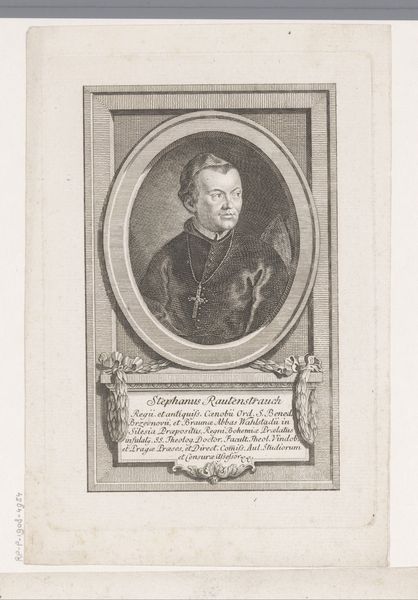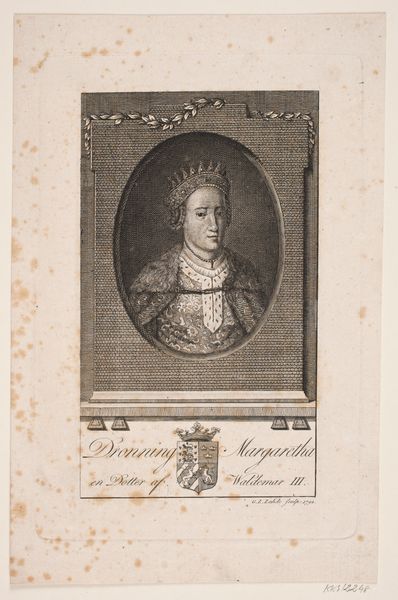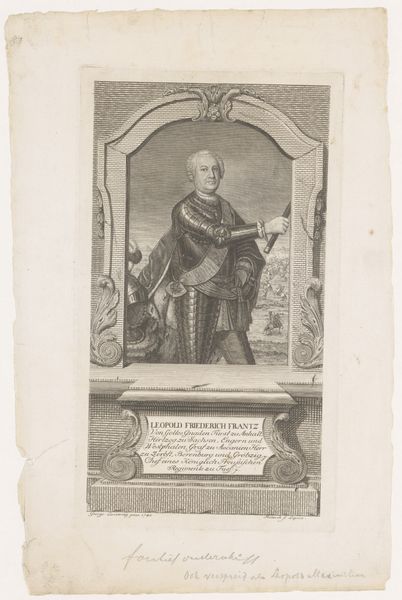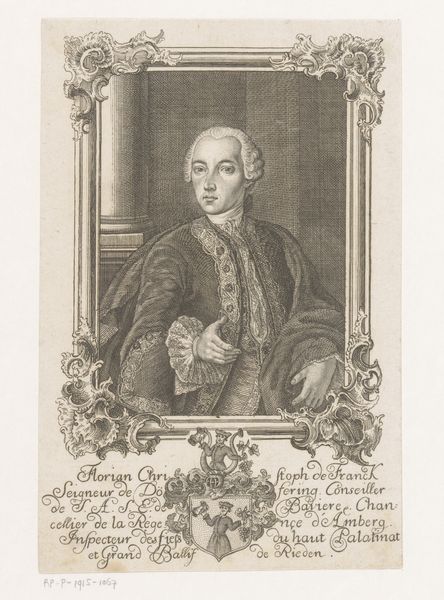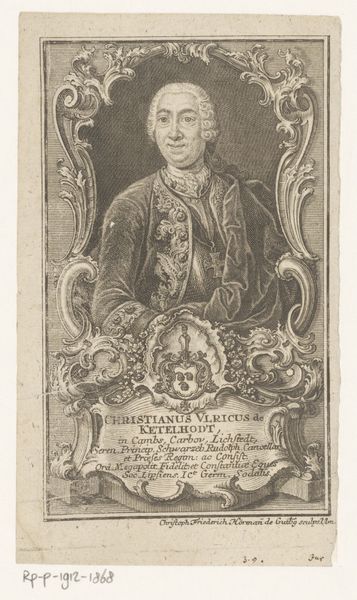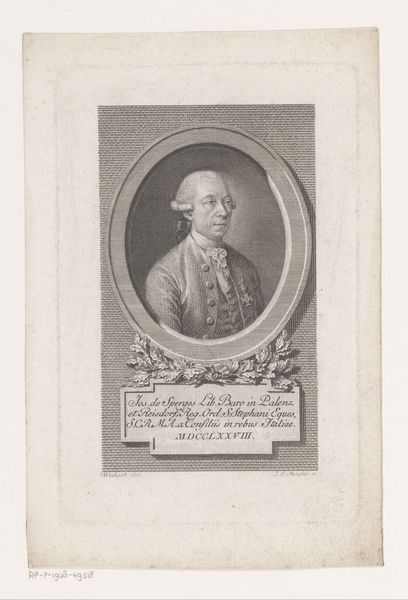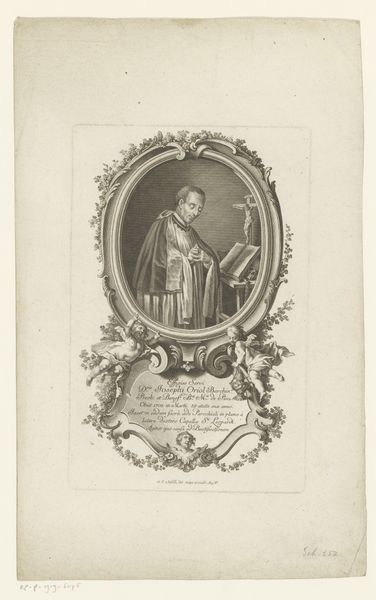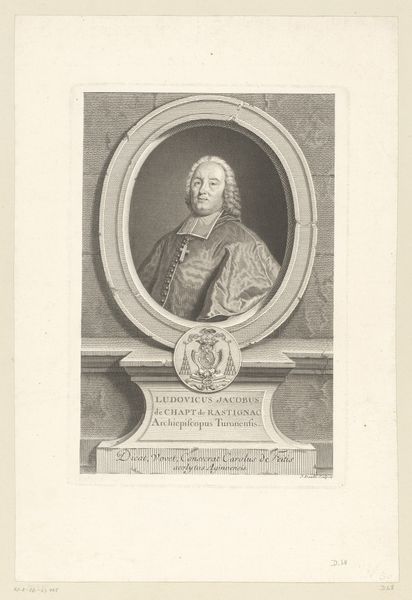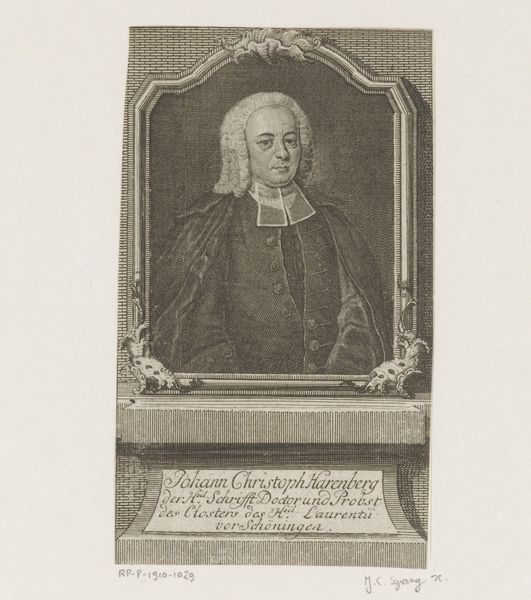
Dimensions: height 234 mm, width 178 mm
Copyright: Rijks Museum: Open Domain
Curator: Here we have a print, "Portret van Franz Xaver von Hoppenbichl," created between 1746 and 1797 by Joseph Anton Zimmermann. It’s done in an engraving style. What strikes you first about it? Editor: The intricate lines, definitely. And how light seems to emanate from the portrait itself, despite the medium. There’s almost a luminous quality, even with what appears to be very humble materials. It's also rather rigid and stiff. Curator: Right. Considering the socio-political context, portrait engravings like this had a vital public function. This image immortalized Hoppenbichl and publicized his status and affiliations. Look closely at the framing elements: his coat of arms, and the text below that details his titles within the Bavarian government. Editor: So, this wasn't simply about personal commemoration, but a calculated visual representation of power within specific institutions. Engraving as a process allowed for multiple copies to circulate and reach different strata of society. That is something unavailable in painting. I’m thinking about the labor involved – the skilled hands carefully etching into metal. It's not just art; it's a complex piece of craftsmanship made to emphasize its subject’s qualities and status. Curator: Exactly! Academic art was bound to disseminate clear and established status boundaries. These details mattered immensely in solidifying Hoppenbichl’s place in Bavarian society and broadcasting the reach and legitimacy of the governing bodies. Editor: It’s amazing how this Baroque print acts as a historical marker, a record of specific roles and relationships. It speaks volumes about the societal structures of the time. This emphasis makes me question how portraiture, in general, reinforced a specific image of power. Curator: I agree entirely. This small print offers substantial insight into the power structures of its time, but it also tells a history of printmaking processes and the use of those images within an ever-expanding society. Editor: Indeed, a potent blend of status, material, and distribution for understanding eighteenth-century Bavaria.
Comments
No comments
Be the first to comment and join the conversation on the ultimate creative platform.
